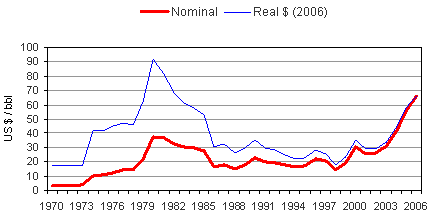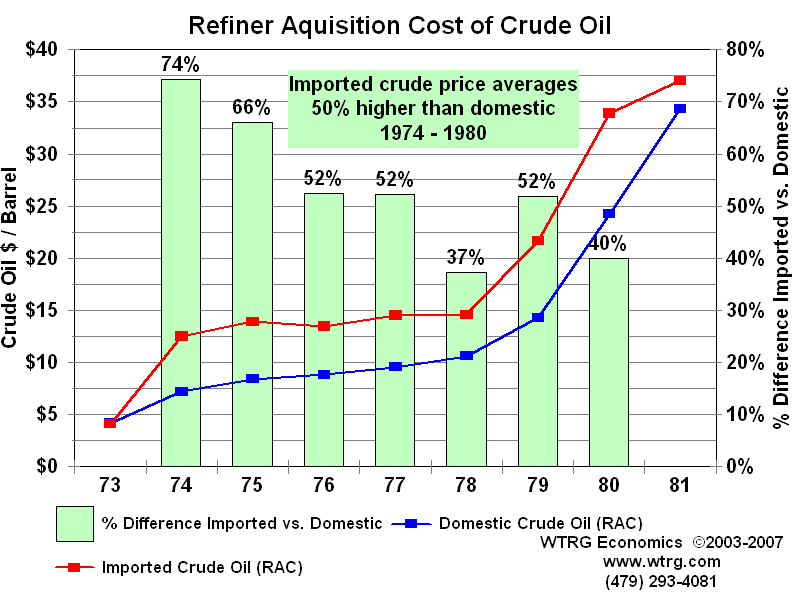Since 1970, the nominal price of crude oil has drastically increased. In 1970 the price of oil was around $3.00 per barrel, and stayed constant until the Yom Kippur War. The war was fought between Israel and some Arab nations, and the United States backed up Israel. The Arab nations imposed an embargo on the United States for their support for Israel. Due to this, the price of oil increased to $12 per barrel in 1974. The price went up because there was a decrease in the supply curve. From 1974 to 1978 the nominal price of oil per barrel was around $12 - $14, however the real price of the oil was decreasing due to the inflation rates. In 1979, Iraq and Iran had conflicts, which caused a decrease in the supply of oil and an increase in the price, soaring to $35 per barrel in 1981.
In the 1980s there was a global recession, which caused a decrease in demand and a decrease in the nominal price. Throughout the 1990s the oil prices ranged from $12 per barrel to $25 per barrel. Since the turn of the century the nominal price of oil has been rapidly growing to over $100 per barrel whereas the real price has been increasing, but not nearly as high as the nominal price. Since the 1970s, the nominal price has jumped around and is now much higher, and the real price of oil has also changed throughout time, but is not at an all time high, unlike the nominal price. This shows that the two price concepts are not directly related and that there are many factors in determining the real price.
The Gross Domestic Product (GDP) is equal to the consumption plus investment plus the government spending plus the net exports (exports – imports). (GDP = C + I + G + X) When the United States expenditures on oil increase, the imports increase, and the net exports decrease. When the net exports decrease, it directly affects the GDP and decreases it. Therefore, the greater the US expenditures on oil the lower the GDP will be and vice versa. Over the past decade the United States expenditures on oil have increased, however have not drastically changed the GDP. The development of oil prices have dramatically changed since 1970 and will continue to change in the future due to the many factors involved.

